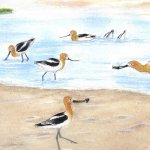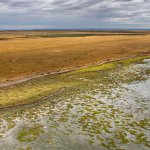This post was first pubished on Manomet’s newsletter
Many shorebird species breed in one place, and when the breeding season ends and the climate begins to change, they migrate to places with friendlier climates. These journeys take place along flyways, which offer the birds the feeding resources and spaces to rest and refuel they require. It is a round trip between the breeding and wintering grounds, a complete annual cycle governed by the seasons.
In the Americas, three main flyways connect North America, Central America, South America, and the Caribbean. The Atlantic and Pacific flyways are populated by shorebirds that prefer or require coastal environments. In contrast, the Midcontinent flyway is used by shorebirds that inhabit interior habitats, such as lowland and highland grasslands, inland swamps and wetlands, and non-natural habitats.
As you can imagine, shorebirds face many challenges and threats along their migratory journey. Their survival depends on each of the localities they visit along the flyway being able to meet their ecological requirements. Ensuring that these birds arrive year after year thus requires coordinated efforts over a huge geographical range that stretches from the Arctic to Patagonia and covers diverse habitats from the Great Plains of North America, the Mississippi River Valley, the Andes, the Amazon, the Pampas, and the Patagonian Steppe.
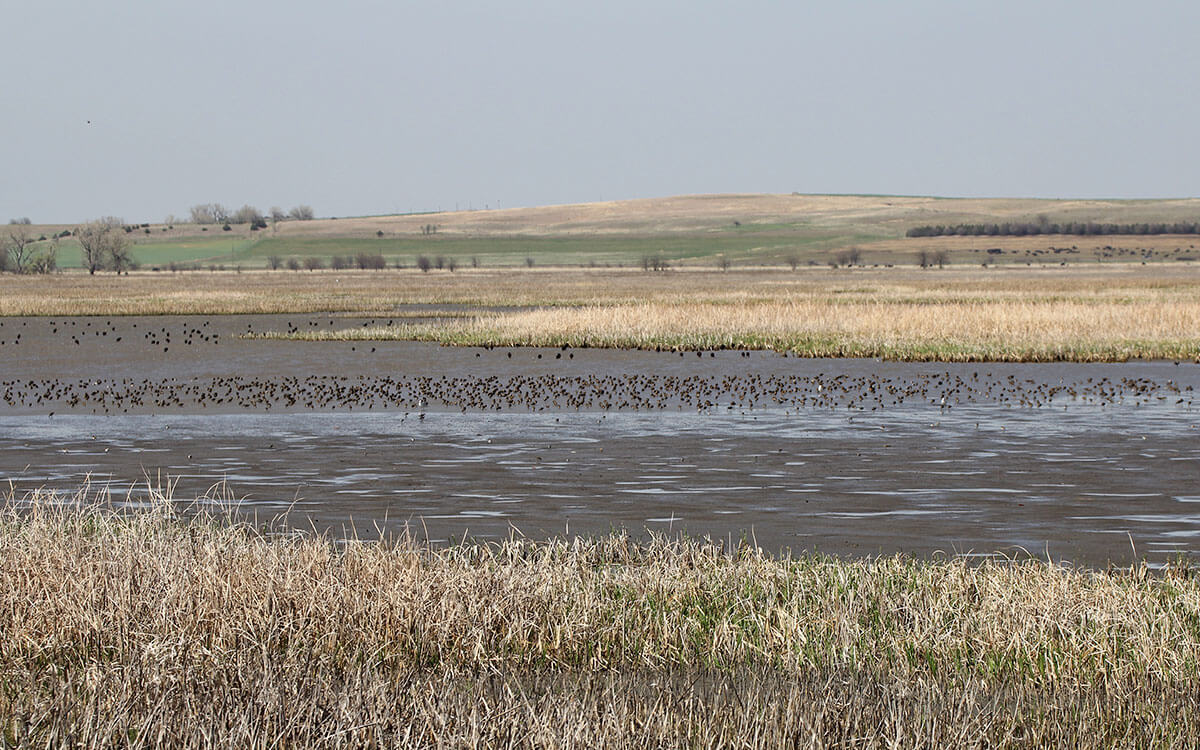
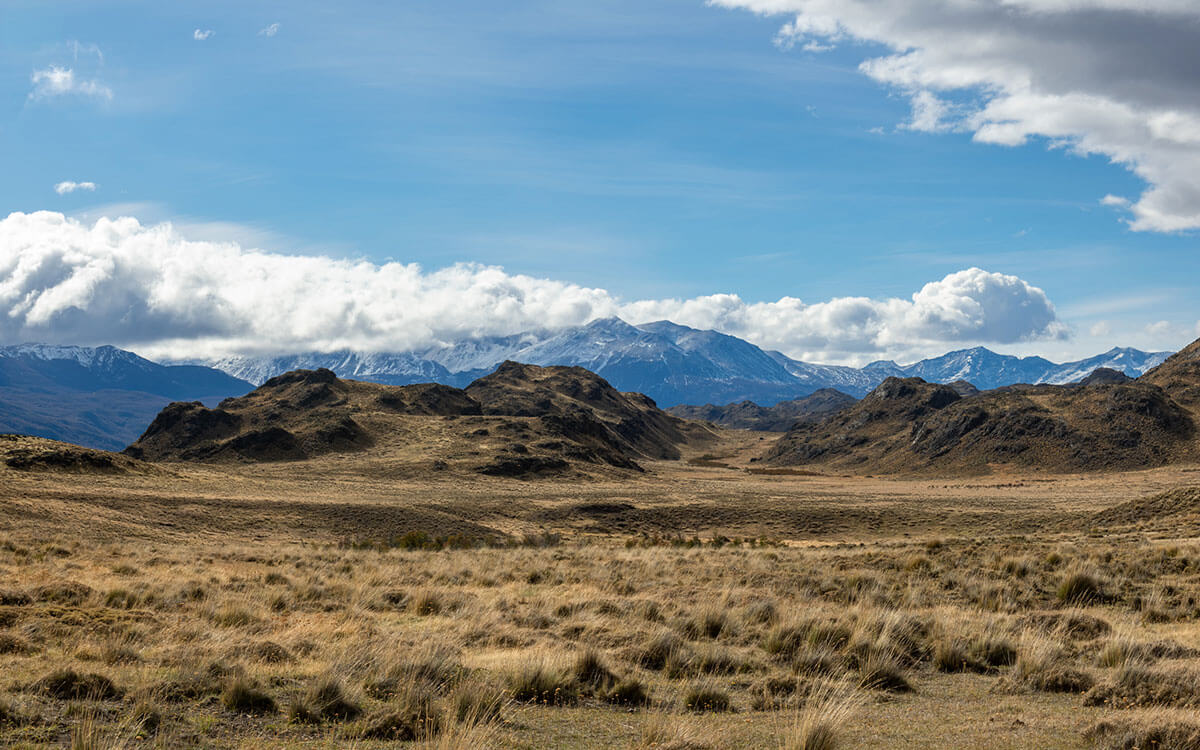
The Midcontinent Flyway passes through a wide diversity of habitats, including swamps and interior grasslands, from sea-level to the High Andes. Left: Shorebir flock at WHSRN site Cheyenne Bottoms, Kansas. Photo: Monica Iglecia. Right: Patagonia National Park in Chile Photo: Ben Cordia.
There are existing conservation efforts and initiatives already coordinated across the Atlantic and Pacific flyways. These initiatives identify the main threats to the birds and develop conservation strategies to overcome them. These processes help identify stakeholders along the flyway that can help support the conservation of the sites and the birds that use them. These processes also help develop networking spaces that strengthen and create collaborations among the different sectors interested in the birds and/or the sites that they visit.
On the Midcontinent flyway in North America, 55% of the 45 populations of shorebirds have shown long periods of decline, while just 9% have increased. In South America, several Andean and interior lowland shorebirds are considered Near Threatened globally. These population declines and threats are the product of several factors, one of the most relevant being ecosystem stress resulting from the impact of human activities and climate change on the birds’ habitats.
Despite these significant population declines and their effects, until now, there was no comprehensive, large-scale, annual life-cycle conservation approach for this flyway.
In partnership with the US Fish and Wildlife Service and Conservation of Arctic Flora and Fauna through the Arctic Migratory Bird Initiative, Manomet is leading the development of the Midcontinent Shorebird Conservation Initiative (MSCI). The Initiative is currently developing a strategic plan to identify the main threats and the most effective management and conservation actions to restore and maintain shorebird populations along the flyway. It is a comprehensive approach that responds to the most urgent conservation needs on the flyway, taking into account the human communities that interact with shorebirds and complementing the existing conservation initiatives developed for the Atlantic and Pacific flyways. This strategic framework is also a guide for conservation donors, agencies of different types, non-government organizations, financing mechanisms, and others that may look for orientation to the potential priorities for their conservation investment.
The strategic framework development covers 26 focal species of resident and migratory shorebirds and is organized into two regions—North America and South America. In North America, there are three key areas, the Great Plains (Canada, Mexico, USA), the Mississippi Valley (Canada, USA), and the West Gulf Coast (Mexico, USA). The focus in South America is on biomes and ecosystems that are critical for the birds. These include:
- Llanos of Orinoco (Colombia and Venezuela),
- Beni Savannas (Bolivia),
- Pampas (Argentina, Brazil, Paraguay, Uruguay),
- Patagonian Steppe (Argentina and Chile),
- Gran Chaco/Pantanal (Argentina, Bolivia, Brazil, Paraguay),
- Rivers of the Amazon region, and,
- High-Andes and Inter-Andean valleys (from Venezuela to Argentina and Chile).
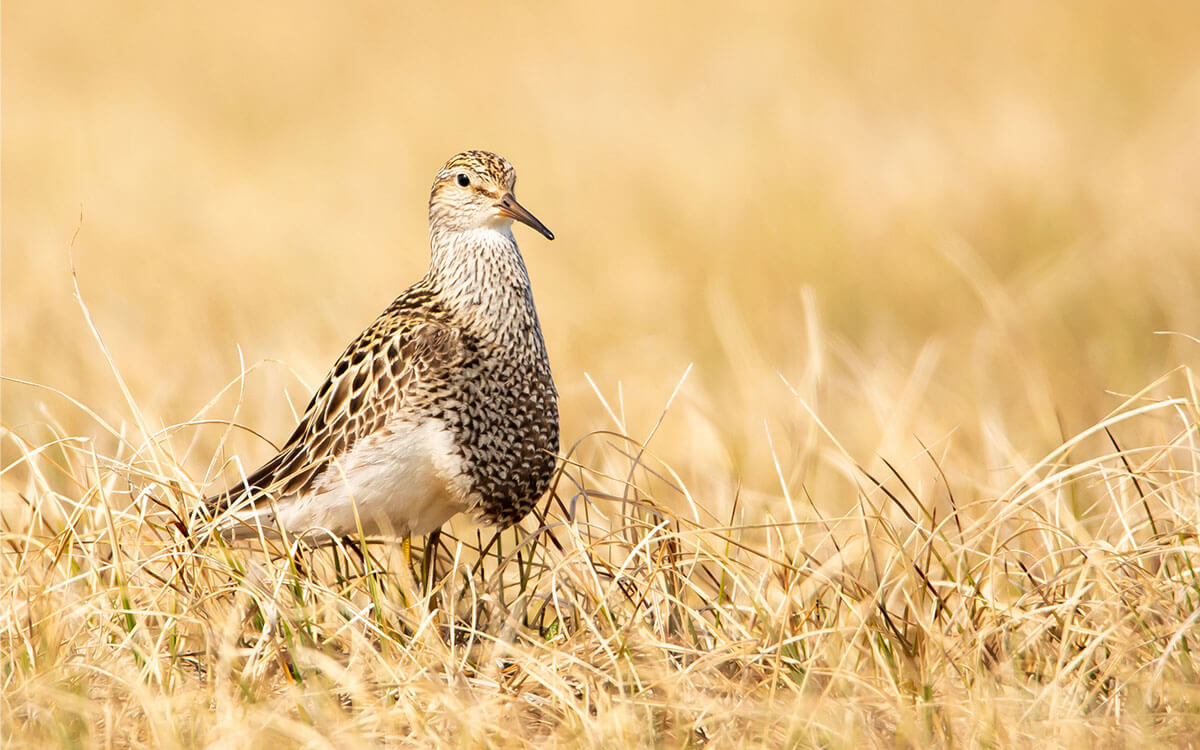
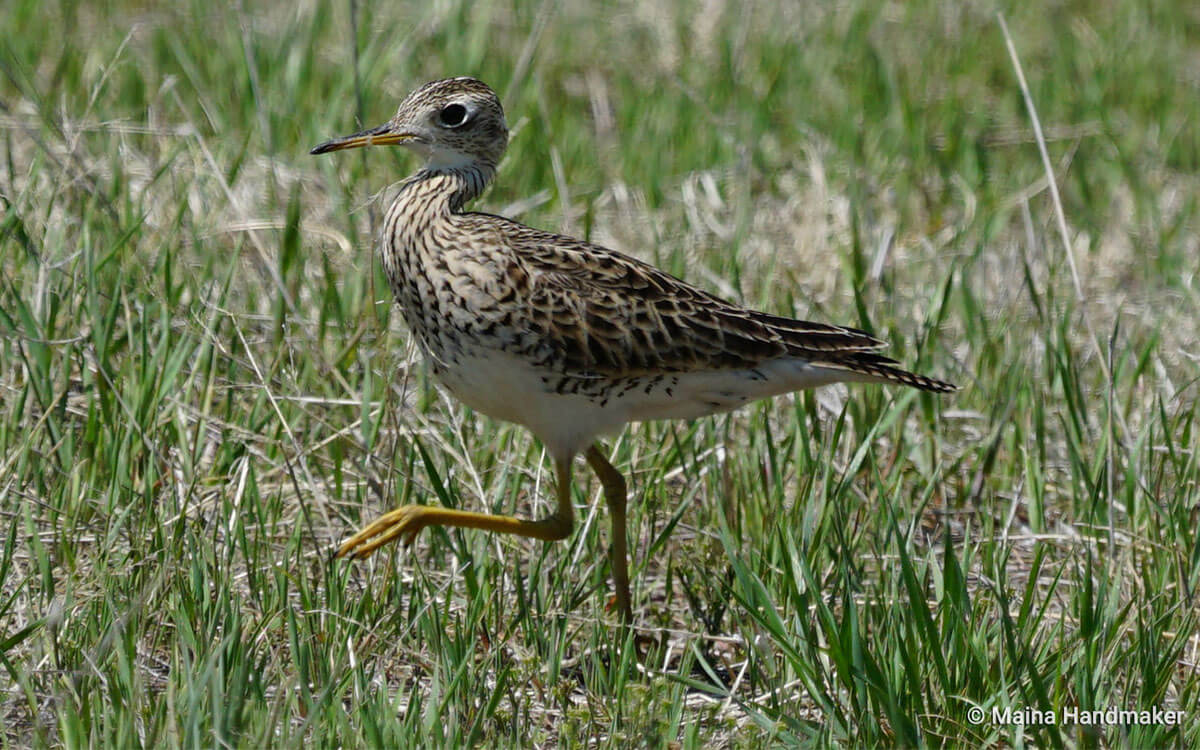
There are 26 focal shorebird species in the Midcontinent Shorebird Conservation Initiative and many more species will also benefit from the conservation actions that are implemented. Left: Pectoral Sandpiper (Calidris melanotos) Photo: Alaska Region USFWS; Upland Sandpiper (Bartramia longicauda) Photo: Maina Handmaker
What is Manomet’s role in the strategic planning of the Midcontinent flyway? Manometʼs shorebird research and conservation activities contribute in many ways along the migration flyways. The Manomet team participated in leadership and support roles during the development of the Atlantic Flyway Shorebird Initiative and the Pacific Shorebird Conservation and is now doing the same on the Midcontinent Shorebird Conservation Initiative. These planning efforts represent an unprecedented but essential cross-border collaboration, as diverse as the habitats upon which the birds depend over their life cycle.
Such efforts at such large scales demand strong coordination skills and integration of teams of professionals to facilitate the process, provide and collate information, and understand the social, environmental, and economic dynamics of important shorebird sites. Manomet staff have built the skills to coordinate multidisciplinary teams and also possess the necessary practical experiences in the field acquired through the implementation of capacity building workshops with local partners, shorebird counts at different scales, and site conservation planning, etc.
This work is made possible thanks to the positive attitude, patience, collaborative spirit, and desire to support conservation shared by all of the people who have participated to date. Thanks also to the financial support and logistics provided by the U.S. Fish and Wildlife Service, the Neotropical Migratory Bird Conservation Act, Environment and Climate Change Canada, Conoco Phillips, U.S. Forestry Service – International Program, Conservation of Arctic Flora and Fauna, Manomet and the Western Hemisphere Shorebird Reserve Network.
If you would like to learn more about the Midcontinent Initiative you can visit our Update Webinars. For English audio: https://www.youtube.com/watch?v=HXTINWHSMyE&t=2s For Spanish audio: https://www.youtube.com/watch?v=1ZQ1vu0K-9Q&t=2s
If you would like to get in touch and participate in the Initiative please contact Isadora Angarita-Martínez.
Cover Photo: Magellanic Plover (Pluvianellus socialis). Photo Brad Winn.





